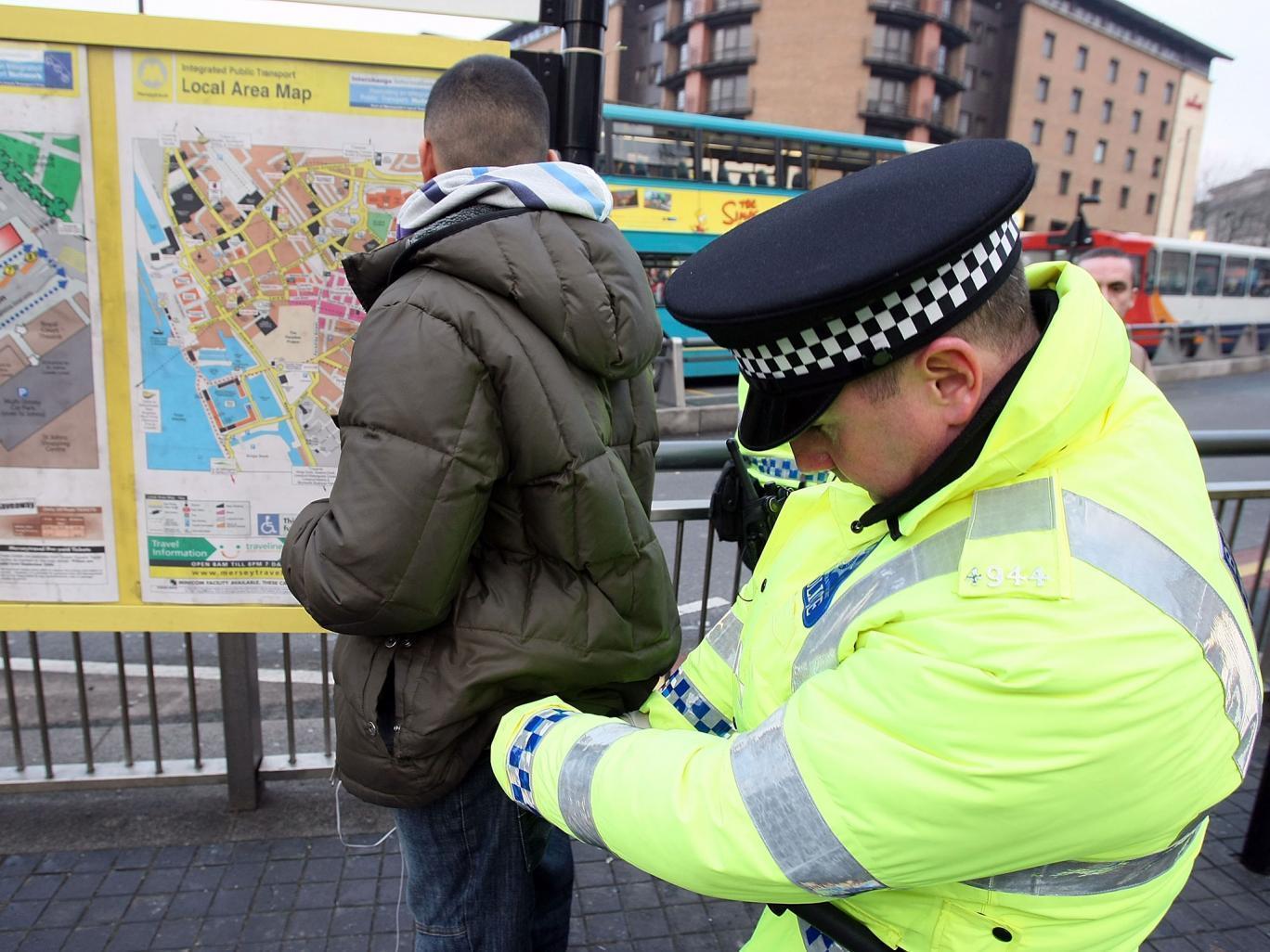Stop and search in the UK is fundamentally flawed, and disproportionally affects people of colour
The policy will only work if there is accountability in the form of body cameras, and if relationships of trust and respect can be developed between the police and the communities they serve

The first time I was stopped and searched by police officers, I was in a car with two of my friends. The officers stopped us; searched our vehicle and us.
We asked them why we’d been stopped and the officers replied that they smelt weed in the car. My friends and I were non-smokers and were puzzled because even if we were smoking, the officers would have to have had super-sharp nostrils in order to smell weed from a car whizzing by on the other side of the road.
I have many more anecdotes from friends of their experiences of stop and search and the illegitimate – and at times ridiculous – basis the police gave for stopping them.
In the face of a rapid rise in the number of acid attacks, and continued concerns about knife crime, turning back the clock and returning to the dark ages of stop and search has obvious appeal. Both Home Secretary Amber Rudd and Shadow Home Secretary Diane Abbott have voiced support for resurrecting the policy, as long as it’s evidence-based or used effectively.
This caveat goes to the heart of the problem with stop and search, which is that in practice, an officer’s decision to make a stop is based on instinct, and not evidence.
On the frontline, the police have to follow their instinct in preventing crime. Stop and search is one of the powers that allow them to do this. In the instances that – we imagine – stop and search will be used, such as knife crime and acid attacks, there will hardly be a treasure trove of evidence.
For instance, the first time a teenager decides to carry a knife to school, there will hardly be any evidence in advance. Subsequently, in order to tackle a potential stabbing in this instance, an officer’s instincts or preconceptions are all he or she has.
So perhaps, rather than requiring stop and search to be evidence-led, the police should be given better training to ensure that their instinct doesn’t lead them to simply discriminate black and ethnic minorities in the exercise of their power. Although it’s possible that there is no training that can prevent officers from being led by their prejudices, after all, aren’t instincts the compound of our prior experiences and the influences to which we have been exposed?
In 2004 Home Secretary Theresa May changed police guidelines to reduce the use of stop and search. Despite this, black people are still six times more likely than white people to be stopped by officers.
Less than a month ago, footage surfaced of a clash between police and a 20-year-old man, Rashan Charles, who died after the incident. Information about what happened is still very sketchy, but this incident goes to the heart of why black people are horrified by stop and search. Sadiq Khan, the mayor of London, has suggested that stop and search should be widely used, but only in conjunction with the rollout of police-worn body cameras.
While my concerns about the use of stop and search being used at all remain, I completely agree that for as long as it is used, it should be accompanied by the use of body cameras and that footage from these cameras should be readily available to members of the public, in particular those who have been stopped. This move may offer communities the comfort of knowing that there is footage to corroborate every stop.
Only 15 per cent of stop and searches result in an arrest. In most sectors a 15 per cent success rate would be enough to lead to the abolition of a method or strategy in search of more effective ones. Digital technology has been used to challenge all areas of our lives. Surely, it is time for the police to tap into strategies offered by technology to tackle the issues that confront us rather than appealing to the corrosive strategies that have caused schisms between the police and the communities they are supposed to be protecting.
Stop and search will only work if there is accountability and if relationships of trust and respect can be developed between the police and their communities. While steps toward accountability can be taken through the use of body cameras, relationships of trust will not necessarily arise.
I was recently at a party with an ex-police officer. He couldn’t stop opining about the old way of community policing and how he knew everyone on his beat. He went on to state that before he retired, three police stations in the area he was policing were reduced to one. The resulting lack of police visibility in the area meant that they were now perceived as outsiders. Furthermore, they were less able to have an in-depth knowledge of the characters within the communities and the problems they faced.
Surely this cut in the number of police on our streets and neighbourhoods is where the fracture in the relationship between community and policing occurs. Officers using stop and search will be left to rely upon their prejudices in the absence of specific knowledge of the communities they are present in.
It is only by embracing the old community style of policing, and by bravely facing the new accountability through the use of body cameras, that stop and search can be used effectively and may even be said to be evidence-based. Perhaps then police can use this power to reduce the number of acid and knife attacks on our streets.


Join our commenting forum
Join thought-provoking conversations, follow other Independent readers and see their replies